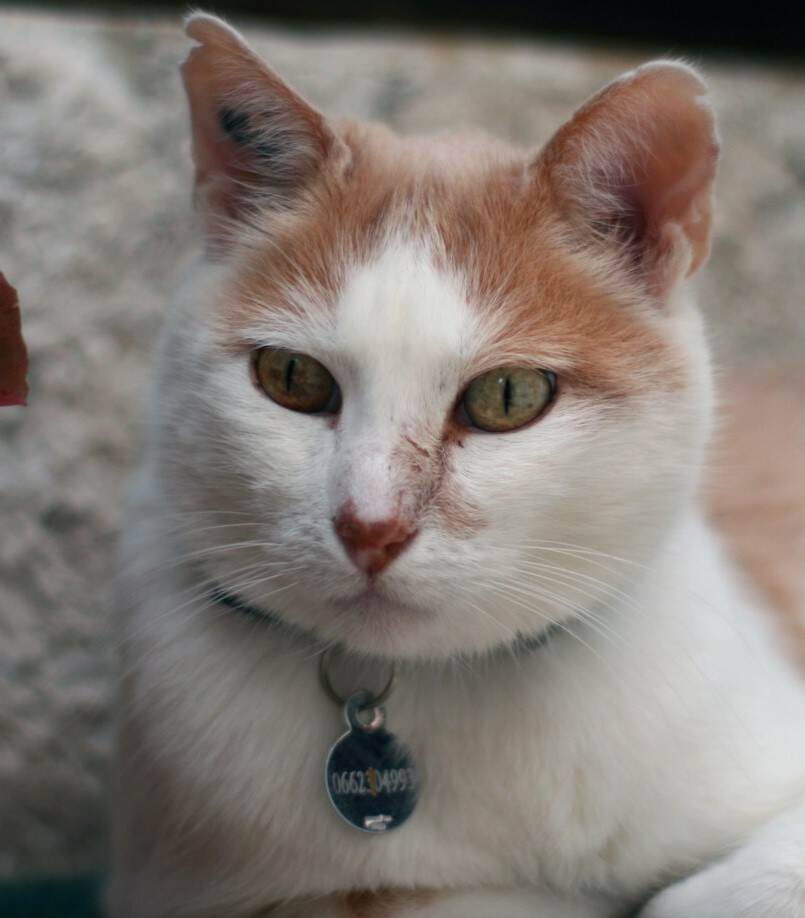
It is often said that “bloated” cheeks, also pronounced as “jowls,” are just a characteristic and notable aspect of male cats, especially those that remain “intact”. However, these features have functional aspects that also come in handy and are relevant to the life of male cats. In this article, we will describe how tomcat cheeks develop over time, the processes involved as well as social and reproductive processes in which these cheeks feature. We will go a step further and look at some of the health issues associated with tomcat cheeks.
Anatomical Features of the Tomcat Cheeks
Cheeks in tomcats tend to emerge when the male cats go through puberty, which is typically at the age between 6 to 12 months. These structures are called cheek pouches. They are formed by fat pads on each side of the face from the area between beneath the eyes to the area of the jaws. Due to its androgenic influences, the degree of development is strongest in intact males, in whom its development is determined by testosterone. These convex structures and tomcat cheeks make the face of a tomcat look vast and masculine.
Functions of Tomcat Cheeks
Protection from Injuries during Fights
The ‘tomcat cheeks’ or the pronounced cheek muscles are present always on tomcats and assist in providing some protection. It is common for male felines (intact) to disorder or knock out the other male. Aside from boasting a larger body mass and bone structure, they also have extra skin and muscular tissue on their cheeks. It works like an extra layer of padding on their face and neck spine. Even these cheeks can become a form of protection during a violent aggressive bout – providing extra coverage to the highly critical vitals of the central part of its face.
The Function of Cheek Fat in Signalling and Hierarchy
Tomcat cheeks are connected with testosterone, the primary male sex hormone. This site is likely to inform other cats that this tomcat is mature and ready for reproduction. Tomcats are territorial and females seek males who occupy territories which helps tomcats dominate their space. This was also aimed at avoiding unnecessary tussles because once other tomcats know that some of them have very big cheeks. They would lose interest in fighting, preventing many fights from breaking out due to this hierarchy.
Territorial Marking
Tomcats, rid their cheeks of their territorial aggression through a behavior called ‘bunting’. The male cat has a scent gland that is on his cheeks, that is used to rub against objects to leave pheromone substances and these pheromone substances are different from other cats. Boundaries are territorial signs that indicate the presence of the tomcat to other cats. Bunting also works to identify cats as the scent left behind is not common to all cats.
Attraction to Female Cats.
The cheeks of the tomcat not only follows his ideal types but also become a medium of ‘sexual selection’. The cheeks are ‘ ‘bigger’’ are understood by recessive females as secured gnomes are present within tomcat. The tomcats because of the size are taken by the female cats to be protective over Spring, and so favour mating with them. Such selection behaviours are quite similar to those where female animals are attracted to male characters that are associated with reproductive success like that of a lion with a big mane.
Effects of Neutering on Tomcat Cheeks

Since the size of the tomcat cheeks is related to the secretion of the testicles, the tomcat cheeks depreciate in size when the tomcat is neutered as the testicles have been removed. However, if the tomcat is zooted after reaching maturity, he will be likely to have his cheeks intact or some size. This is like the other general effect of neutering cats who have low testosterone levels as competing for mating or defending territory is not as a major concern, and the cheeks do not appear to be as big. Most of the time those that have been neutered are less prone to aggressive behaviour which also makes cheek size less of a necessity as they need it for defence.
Nevertheless, surgery does not prevent all health concerns related to tomcat cheeks.
1. Swelling and Abscesses
One of the simple dry mothers’ warnings relates swollen tomcat cheeks to some health problems such as abscesses or infections. Elsewhere in the world, cats that go outside are especially susceptible to fighting wounds, and infections, developed by bite. In such events, the formation of an abscess that causes pain, swelling, and there is discomfort to the individual where veterinary assistance is required can be expected. Severe abscesses may be cut to drain them whereas such patients are often placed on antibiotics after surgery to prevent infection.
2. Dental Issues
The appearance of swelling in the cheeks of a tomcat could further be attributed to dental diseases. The presence of tooth abscesses, infection of the gums, or any other pathological condition affecting the mouth can evoke swelling of the face. Dental diseases that affect cats include gingivitis, periodontitis, and tooth decay. In case you observe that the tomcat has swollen cheeks or if it’s in pain while eating then please consult the veterinary doctor without delay.
3. Insect Bites and Allergic Reactions
Like all the members of the feline species, tomcats are prone to developing allergies or two enjoy some swelling due to bug bites. If you notice particular swelling in the jaw of your cat without the physical obviousness of an injury of any kind, cardiogenic shock creative has nothing to do with the jaws but is an event of an insect bite or sting. Other insects can cause enough allergies that cats develop and this may prompt a quick medical response.
Biological Thoughts on the Function of Tomcat Cheeks
The tomcat cheeks are fat pads developed to enhance the shape of the male cat’s face. These pads are protective and also act as toms’ display of strength to fellow toms during fights. In any case, if the cheeks grow large or visible, such a cat will be seen as more dominant by many other cats. It is especially evident in cases where tomcats want to attract the attention of female cats or mates during mating seasons.
Besides the aggressive display, tomcat jowls also have scent glands underneath their skin, which release pheromones. These pheromones contain critical details about a cat’s presence, reproductive ability, and healthy status. When describing this habit, tomcats rub their cheeks on any surface, known as bunting. These tomcats are also said to carry scent marks that describe their claim over territories. This type of scent marking does not only specify territorialism. It also assists in forming social bonds amongst the tomcats when they rub their bodies on top of each other’s body”.
Social and Behavioral Impact of Tomcat Cheeks
In most cases, tomcats that have large jowls become aggressive and are more territorial. However, these cheek pads, being a sign of force, are also used to assist in fights. When other males are confronted, thick pads cover the critical regions and lessen the chances of injury. A tom cat needs to protect himself in the wild, where various skirmishes for territory and the right of mating occur.
These jowls, apart from squabbles for territory, are also indicators of readiness to mate. Most female cats see male tomcats whose cheeks and jowls are enlarged due to subcutaneous fat deposits as a better choice because this trait is evidence of a good species. Therefore, it is logical that males with bigger cheeks will have higher chances of mating, which only contributes to this feature within the feline social order.
Hormonal Influence on Tomcat Jowls
Jowls and the tomcat’s aggressive behaviour targeting female cats have a common hormone and that is testosterone. This means tomcats that are not neutered will typically develop larger cheekbones or pads which are influenced to a great extent by testosterone. Also, testosterone levels are directly proportional to the sizes of the jowls installed on these male cats. On the other hand, after neutering a tomcat seal, this hormone’s levels detectable decrease and the jowls seem to shrink too. Arriving at this conclusion, the authors discuss how neutered tomcats have fewer cheek fleshes than intact tomcats.
Conclusion
Tomcat cheeks are an interesting feature of male cats as they are multifunctional in protecting and helping with reproduction and forming social bonds. These cheek pouches are used for physically protecting during fights, displaying strength as well as boundaries, and are so much more than being just ornamental. Although tomcats visibly have extra skin puffiness, these traits are essential in telling other tomcats that they are ready for communication and mating. Nonetheless, every cat owner or fancier should be concerned and watch out for their cat’s or tomcats’ specific cheeks. Since sudden changes like puffing may depict health issues, one should seek veteran help.
Why cats have tomcats’ cheeks is a question that generates multiple answers, and an appreciation of the evolutionary nature of feline anatomy is one of the powerful reasons that every cat owner should possess. For people who have cats as pets or just have an interest in these peculiar animals, learning more about tomcat cheeks will surely help them understand further what makes male-feline cats so unique and how such features can be beneficial.
FAQs
Due to the presence of powerful fatty deposits, these tomcats’ cheeks, which may also be referred to as jowls or flanges, develop as tomcats reach full maturation in terms of sexual readiness. Such jowls are stimulated by testosterone and usually develop as the tomcat becomes sexually active. Tomcats’ jowls do serve a purpose as they allow the male cats to show subordination, defend themselves during a catfight, and scent marks to show ownership of the territory. Lower levels of testosterone also mean that female cats do not grow such jowls and hence such alterations would seem abnormal for a female cat.
A tomcat’s jowls do tend to shrink with time post-neutering. This does damage in the cheek pad’s development as it lowers the testosterone levels which would have developed these jowls. Many people are uncertain about this alteration in features but due to this alteration, it is common for neutered males to have smaller and less set-out cheeks than those of their unneutered rivals.
Although large cheeks are a common feature of male cats, any sudden swelling, redness, or pain in the cheek area should suggest some abnormality. Abnormal swelling may be mostly due to abscesses or fight injuries. If a tomcat has pronounced and painful cheeks, he should be taken to a veterinarian to be treated and any disease should be properly diagnosed.




